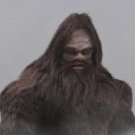Here's an excerpt from the Army Camouflage Manual http://rk19-bielefel...vival/FM/21.htm
And here is a more general manual http://www.scribd.co...ment-and-Decoys
I've always been taught that the first principle is to break up your outline. That way when you're stationary, the eye follows the wrong lines and cannot identify your silhouette.
At sea, against visual identification, a ship can be concealed at a distance in broad daylight if it simply aims a spotlight at the viewer. The eye picks up the glare in an environment that already has lots of glare, and the ship "disappears". Another simple technique is to position yourself in a spot where there is uneven light, under a tree, at the edge of light ad shadow, etc. Still another is to stay in a less well lit area. When we are in the open, in brighter light, we have trouble making out objects in areas with lower light, just a few feet back into the trees, for example.
When light strikes an object, some wavelengths are absorbed, some reflected, and some refracted (scattered). Look at a tree with leaves on it sometime and you'll see some of the effects that are described for bigfoot. You have many leaves, some shiny, others not, all oriented in different directions at different angles to both the light and to the observer. As you watch it, different features of the tree will fade in and out as the light "plays" on it. Watch the surface of a lake with even small waves, and you will see the same effect where features fade in and out.
Hair can also absorb, reflect, and refract light (scatter it). If the light itself is also uneven (from heatwaves, or from the play of light and shadow such as that created by moving leaves), then the effects of refraction are magnified. If a bigfoot intentionally or instinctively chooses paths that move through these areas, then that would help it when it simply wants to stop and go still.
An additional simple, but unusual, natual adaptation would be hair that can polarize light the way sunglasses do, causing wavelengths of light oriented in one direction relative to the hair to be blocked and others to not be. The hair would simply need a series of structural features that are oriented the same way along its length, or repeatedly around its circumference in rows along its length. Hair of this nature would create a clear outline when it is all lying straight in one direction, but if the bigfoot could slightly "fluff" its hair at will (imagine your hair folicles prickling or your hairs standing on end), causing its individual hairs to stand out from its skin at hundreds of different angles (sort of the way a porcupine does with its quills), then it could further break up the light that hits it and further confuse its outline.
Bottom line, it could be a combination of the environment, bigfoot's physical adaptations, bigfoot's behavioral adaptations, and our own limited perception.
I wonder. Have any of those who study possible bigfoot hairs analyzed them to determine how light behaves when it hits the hair?



